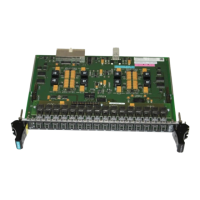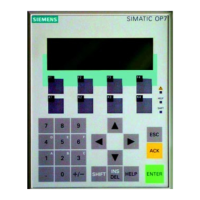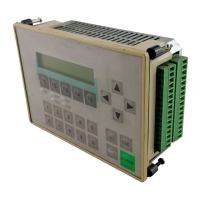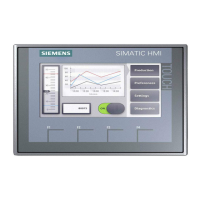Communications configuring
System- and communication configuring D7-SYS - SIMADYN D 3-141
Edition 12.2003
3.13.2 Data transfer technique
Data transfer is realized in the half-duplex mode via an RS485 interface
(2-conductor cable). The master addresses all of the slaves, one after
another, with a telegram. The addressed slaves transmit a telegram back
to the master. In accordance with the master-slave procedure, when the
slave receives a telegram, it must first transmit a telegram back to the
master before the master re-addresses this slave.
The sequence of the addressed slaves can be specified by entering the
station address in a circulating list (refer to the central coupling block
@CSU). If several slaves must be addressed in a faster cycle (scan) than
the others, then their station address can be configured a multiple
number of times in the circulating list.
The scan time isn’t defined due to the inconsistent telegram delay- and
processing times.
0 0 1 1 0 0
t0 t1 t2 t3 t4
t5
t6
C
cle time
t0: Tele
ram dela
time
master-slave0
t1: Res
onse dela
time
slave0
t2: Tele
ram dela
time
slave0-maste
t3: Processin
time
maste
t4: Tele
ram dela
time master-slave1
t5: Res
onse dela
time
slave1
t6: Telegram delay time slave1-master
...
Fig. 3-48 Definition of the cycle time
3.13.3 Transferred net data
On the receive- as well as on the transmit side, up to 252 bytes of net
data can be transferred. The net data length can be configured and is
dependent on the particular application.
3.13.4 Configuring
3.13.4.1 Central coupling block @CSU
An @CSU central coupling block has to be configured to initialize and
monitor the coupling. The central block only initializes the coupling during
cyclic operation; the coupling remains inhibited before cyclic operation.
Mode of operation
General
Initialization and
monitoring

